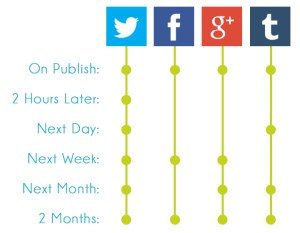These days, it’s hard to argue against the importance of having a website for your firm or organization. However, simply having a website may not be getting you the results you want. While your website can be a powerful lead generation tool, the impact isn’t automatic. Simply putting up a few pages with services and contact information just won’t cut it. To truly get the most out of your website, it needs to utilize certain key components.
Here are seven ways to transform your website into a high performance, lead generating machine:

Educational Content
In order to position your firm as the solution to a prospective buyer’s problem, your website needs to provide the answers to their biggest questions. People spend a lot of time on Google searching for answers and your website is the perfect place to demonstrate your firm’s expertise at solving particular problems. When a prospective buyer finds an answer to their problem on your website, they become more likely to return to your firm as a trusted resource once they’re ready to hire someone.
Even though it can feel counterintuitive, focus your efforts on educating and not selling your services. Think of it this way: buyers are more likely to connect with a firm that has a website portraying, “here’s how we solved problems for other clients,” versus “look at all the services we provide.”
Your website’s educational content can be everything from your blog (more on that below), to videos, guides, eBooks, whitepapers, case studies and more. Having a wide range of information and material mediums can help you connect with a broader audience.
SEO
Even the most visually appealing website can’t manage to generate more leads if your prospects aren’t finding it. Avoid the problem of having a website that doesn’t bring in traffic by using SEO tactics to help your page get found.
One of the most popular and effective SEO tactics is the use of keywords—both on the main page of your site and within your educational content. For more tips on optimizing your professional services firm’s website, check out this interview with digital marketing guru Rand Fishkin.
Blog
Simply put: a blog is a must-have for a lead generation website. Make the most of your content by regularly publishing informative blog posts that are at least 500 words and include a call-to-action at the bottom to encourage your readers to take the next step in their relationship with your firm. You should also include social sharing buttons to help your content reach more prospects, as well as a “subscribe” button in the sidebar to encourage email subscriptions.
Links
Utilizing both internal and external links on your website not only helps visitors easily find what they’re looking for, it can also help your website perform better in search engine results. Link to outside content when relevant in your blog posts to build your credibility and knowledge base and include internal links to drive more page views and traffic to other pieces of content or your services pages. Just make sure your link building is natural and relevant—you don’t want it to seem overdone or forced.
Offers
Rather than waiting for your prospects to make the first move, give your website visitors the opportunity to engage with you more by including offers on your website and in your blog posts. People are often more than willing to exchange a small amount of personal information—like their name and email—for a piece of high-quality educational content, like an eBook or guide.
Your offers can range from soft offers that continue to build interest, like “download this piece of content,” or can begin a more substantial relationship, like “request a free assessment.” Regardless, make it a point to ask for the least amount of information possible. If your prospects see a form with 10 things to fill in, they’re more likely to leave your website than convert on your offer.
Clear Messaging
Your website visitors shouldn’t have to dig through page after page of your website trying to figure out exactly what your firm does. Instead, the messaging on each page should be clear, concise, and to the point. Avoid using a lot of jargon or buzzwords and do your best to be as straightforward as possible. Since you may be too close to your website to accurately critique your messaging, test the clarity of your messaging on an outside person and see if they can identify what your firm does in less than one minute.
Your website should quickly answer these three simple questions:
- What do you do?
- Who do you do it for?
- Why should clients choose you?
Mobile Friendly

Thanks to Google’s recent algorithm update, a mobile optimized website is no longer an optional perk. With more users connecting online through mobile devices than ever before, failing to have a responsively designed website means you’re also failing to attract a large subset of potential leads.
While many of these components may take time to truly show results, each is essential to achieving the goal of having a high-performance website. With these seven essentials, your firm can begin generating more leads than ever before.
Digital & Social Articles on Business 2 Community
(55)
Report Post






